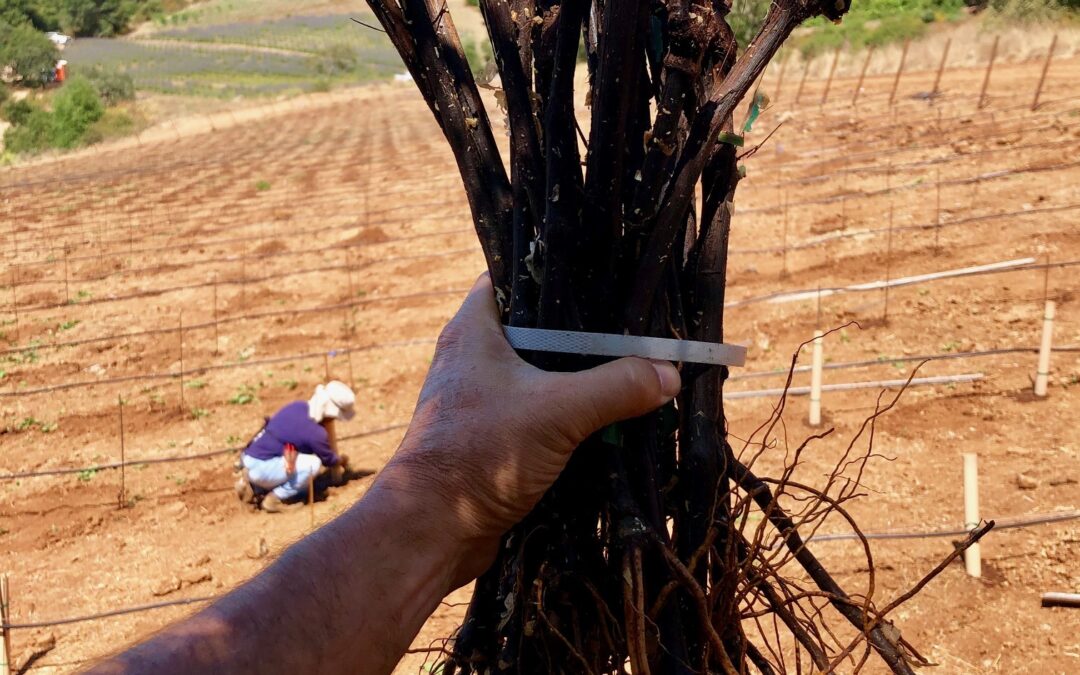
Jul 20, 2019 | Sonoma, Vineyard, Wine
I will soon be sharing images of the re-construction of an iconic Cabernet vineyard in the next blog post. But while we wait for the newly planted vines to grow, please enjoy this short sampling…
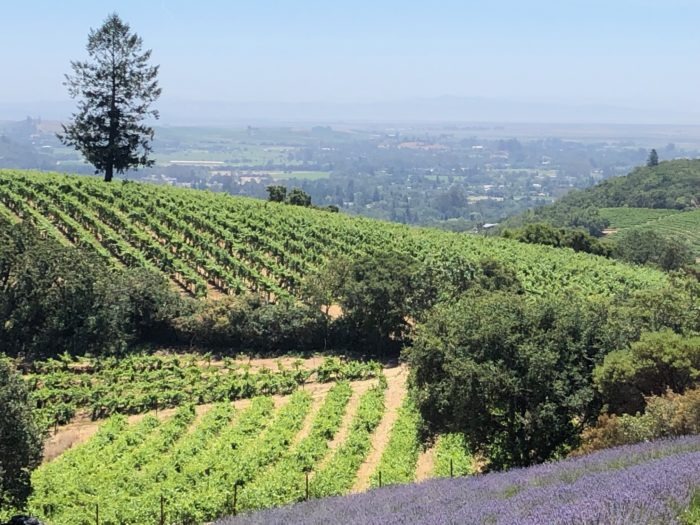
This is the project we’ve been working on all summer, with old vine Zinfandel and new Petite Sirah and the recently planted new Cabernet block. What a view into the town of Sonoma and down into the bay.
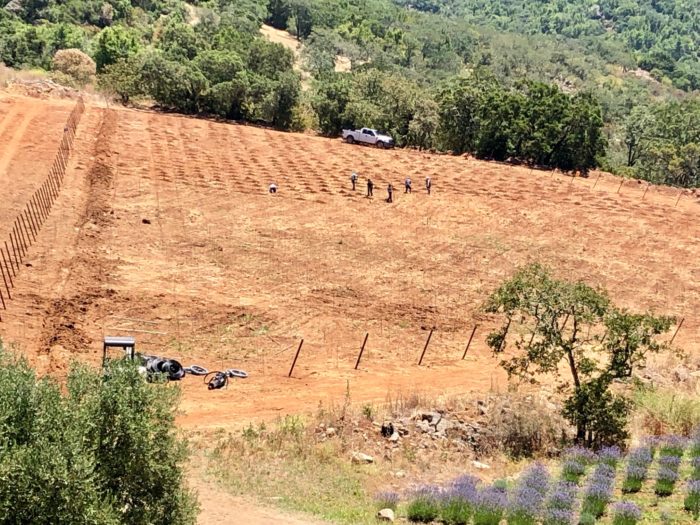
And this is the ‘before’ picture. Steep slope, boulders, rocks, red volcanic soil. Someday, this new Cabernet block will look just as spectacular and produce a gorgeous Sonoma Cabernet.
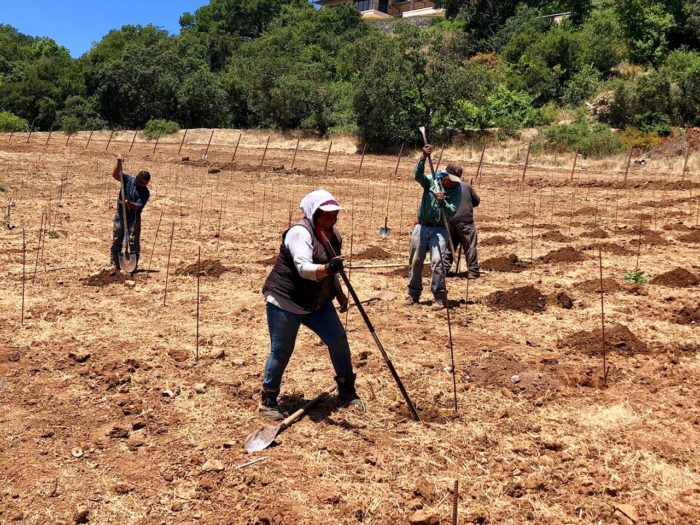
It is really hard work to dig the vine holes in the heat and on rocky terrain.
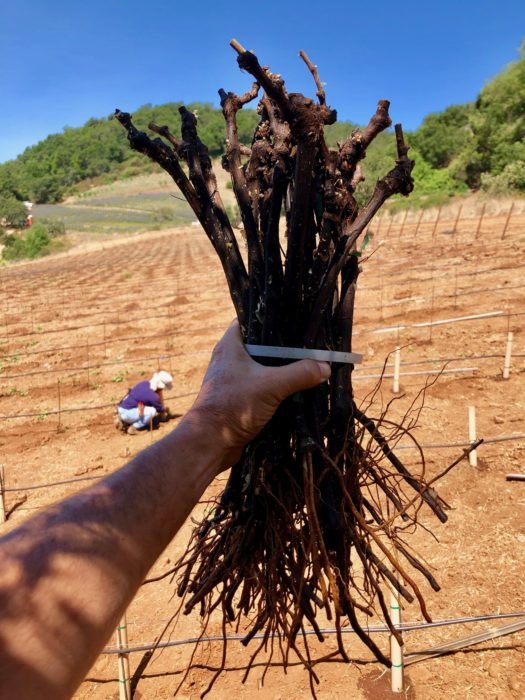
This is what a bundle of new Cabernet grapevines look like. They are “dormant benchgrafts”, sound asleep, fresh out of the cooler. More on that another time.

The vine tag indicates the variety is Cabernet Sauvignon, clone is UC Davis Foundation Plant Services clone 30.1 (the famed Disney Silverado clone) with rootstock 110R (very drought tolerant).
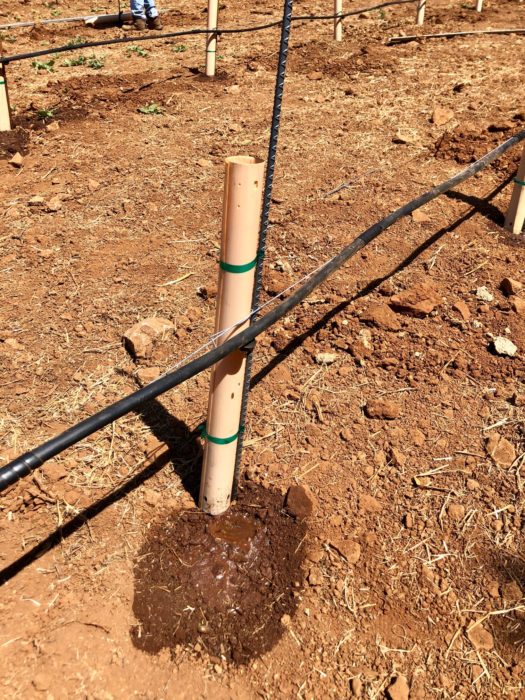
A protective grow-tube is placed around the plant. And the water flows. A great sense of relief.
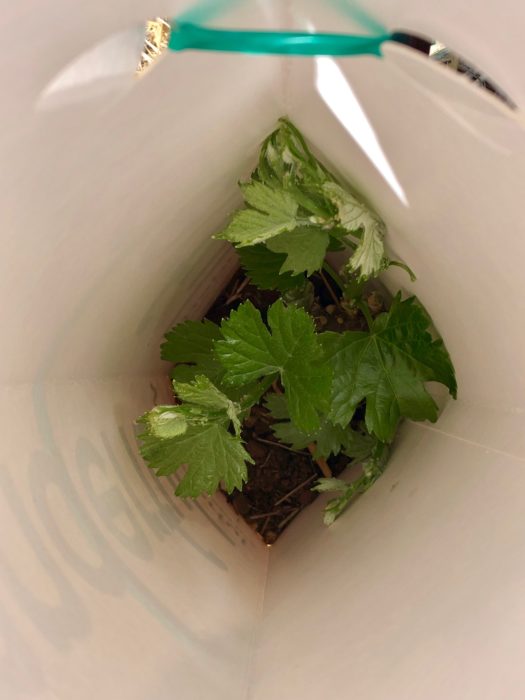
In ten short days, the vine has sprung to life!
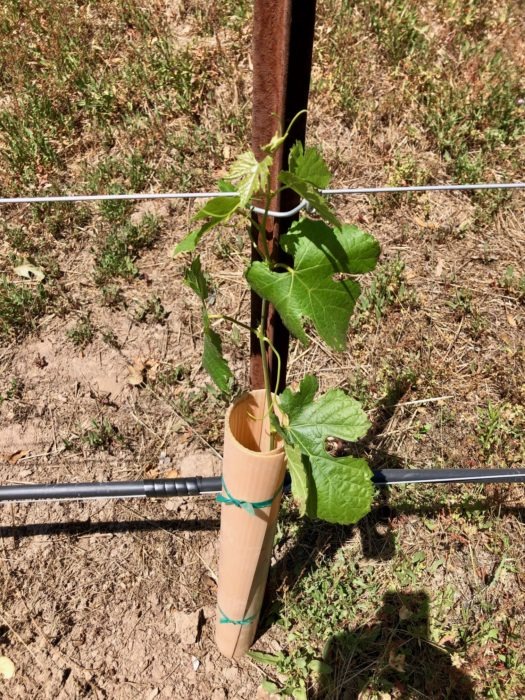
And in twenty days the new vine has pushed out of the grow tube reaching for the sun. And another iconic Sonoma Cabernet vineyard begins it’s life, soon to be delicious wine at your next meal.
Bonus Round! KSVY Sonoma radio, you made it this far. Now for the fun stuff…

Am I on the air?
From left to right, the infamous Sonoman Simon Blattner, special guest Ken Wornick (yours truly) and smooth operator and radio host Rick Wynne enjoying a commercial break during “The Morning Show” on 91.3 KSVY Sonoma.
You can listen right now to the ‘grapes and wine’ segment of “The Morning Show” Click here and go to minute 26
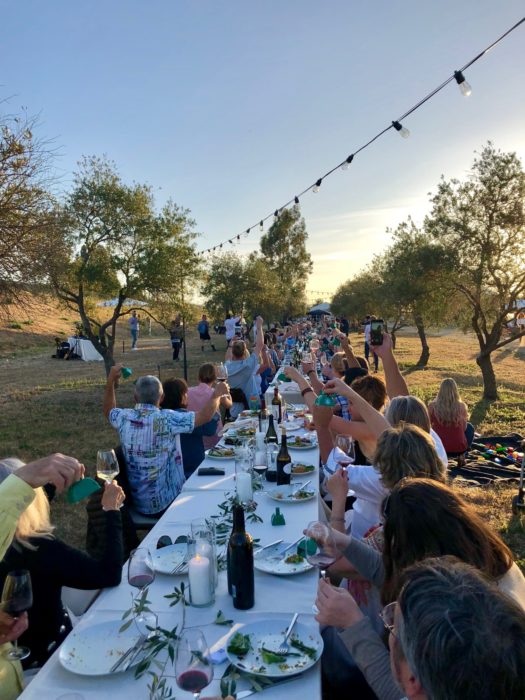
Hydeout Sonoma and Dysfunctional Family Winery attended the annual Sonoma Valley Vintner’s and Growers annual member’s BBQ and “launch the harvest bell ringing”. Had a great time visiting with our fellow vintners Muscardini (Michael and Kate), Landmark Cellars (Tom and Michelle Rouse), Nun’s Canyon (Kimberly Hughes), Beltane Ranch (Lauren Benward Krause), and the incomparable Sondra Bernstein.
Click here for an 8-second video of Sonoma Grower’s Harvest BBQ
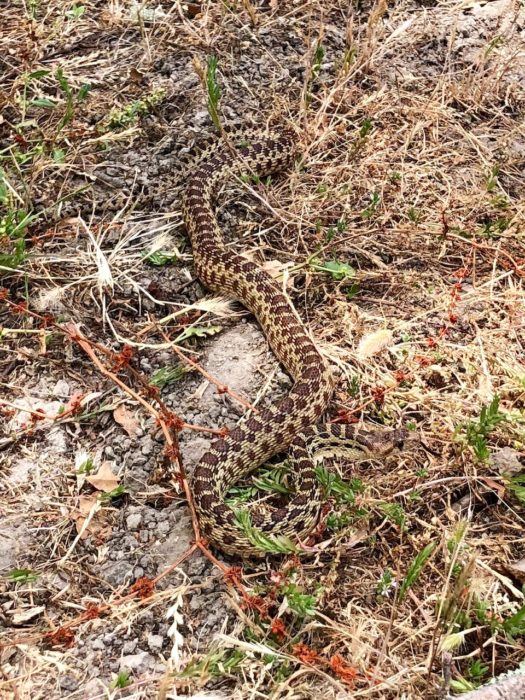
Snakes are a rare sighting but sometimes the swallow something large (see the swollen middle) and cannot move off. In which case, they become the focus of much conversation and observation. The camouflage is amazing, right?
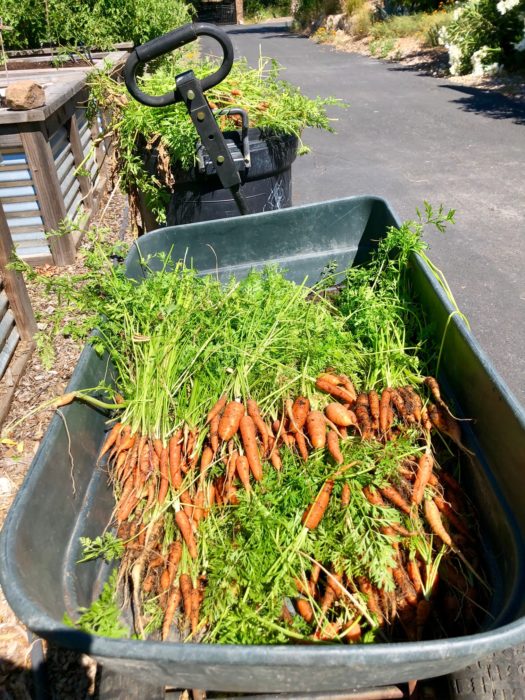
Back home at the Hydeout Sonoma ranch, summer is veggie time. But that new Cabernet vineyard project kept us busy. Forgot all about these carrots. A wheel barrow and a trash can full! Turned them into a delicious carrot soup.
That’s all for now. Stay tuned for more blog postings on the world of grapes and wine.
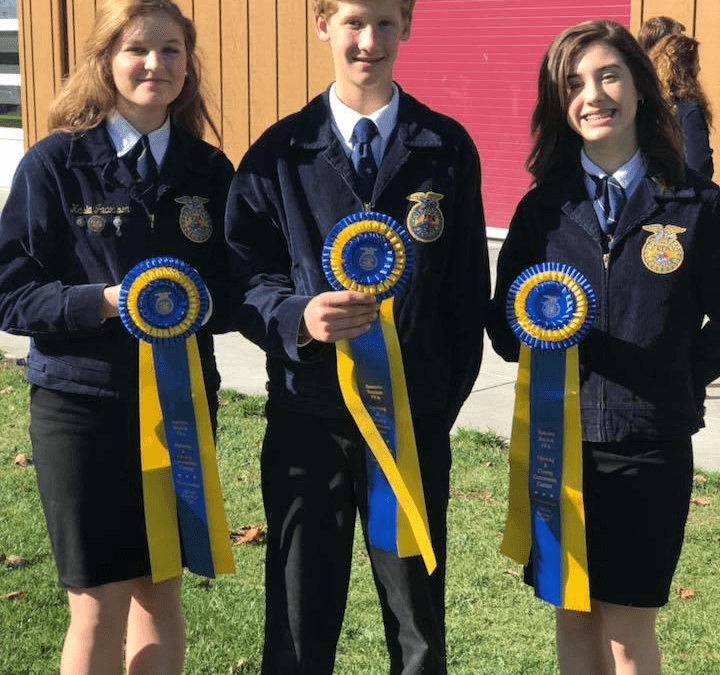
Dec 2, 2018 | Sonoma
From my view on the Advisory Board of the Sonoma Valley High School Agri-Tech Academy, I get a first-row seat to watch some of our best and brightest explore their love of farming and plan for their (and our) wine and food futures. Pictures are worth a thousand words, so let’s let them do the talking…
The Sonoma Valley High School has it’s own 5-acre farm, with greenhouses, animal pens, and a vineyard. Here is the 2018 student-lead grape harvest team:
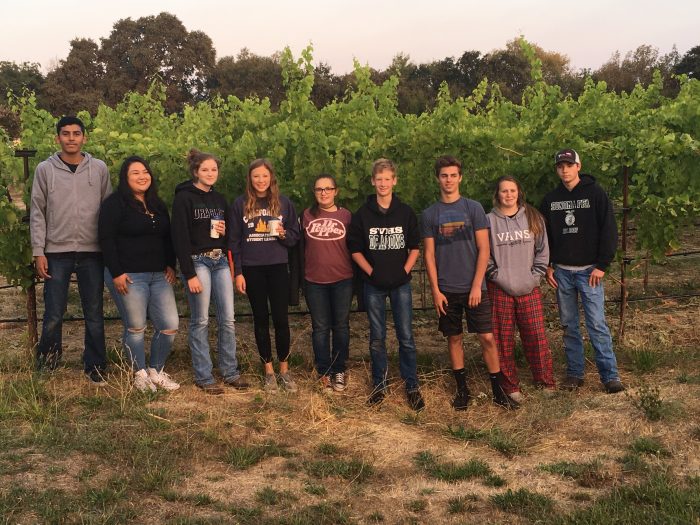
When it’s close to harvest time growers and winemakers use a light refracting device to measure the amount of sugar in the grape juice. Here, staff and students take sugar readings with a refractometer. These grapes are ready to harvest with a brix (sugar) reading of 23.2, which will yield a wine with approximately 14.3% (alcohol by volume):
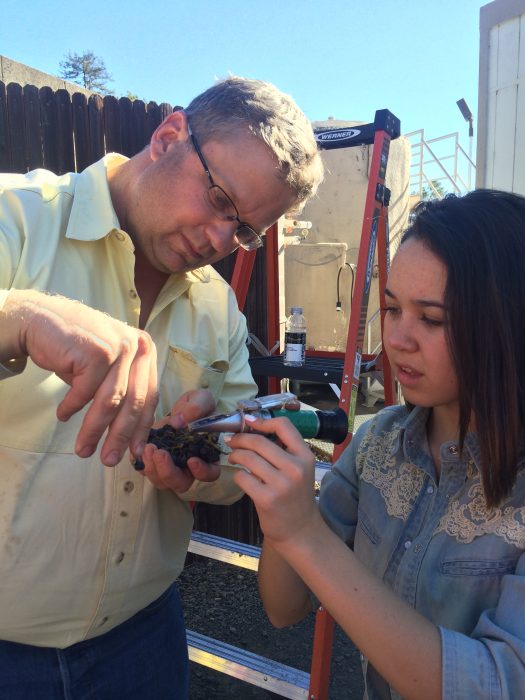
Here, a few weeks ahead of the harvest, Ag Academy teachers and students remove leaves and shoots to get more sun into the canopy and make access to the grapes a bit easier at harvest time:
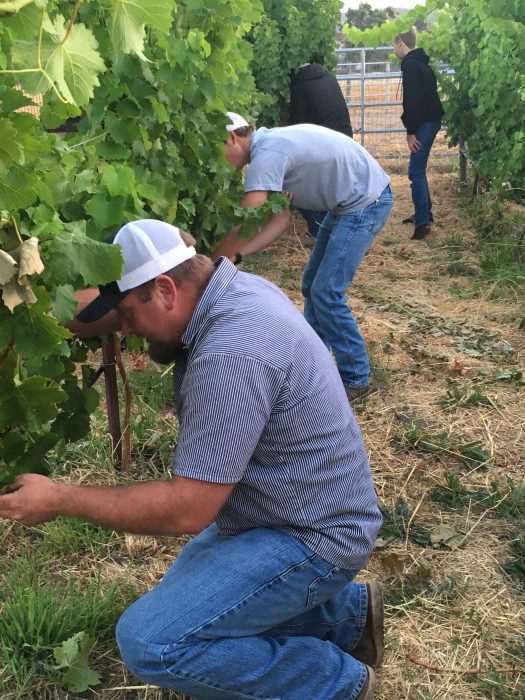
After plenty of sweat and hard labor, and some good fun, close to a half-ton of Chardonnay is ready to head to the winery. In the United States, there are serious prohibitions against students working with alcoholic beverages, so this fruit is delivered to the winery by the adults, turned into wine over the next 18 months, bottled, labeled, and then sold (to adults) at various fundraisers:
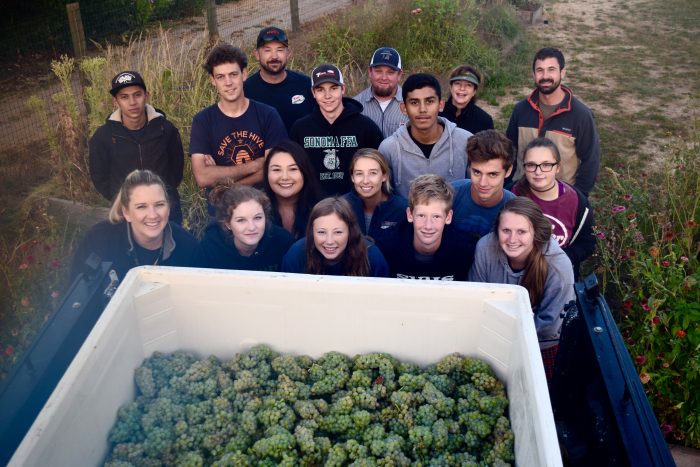
Inside the greenhouse after harvest, we pause to study how a ‘clone’ (a single bud, the offspring of a given grape variety) are removed with a sharp knife and ‘grafted’ (attached) to the ‘rootstock’ (an entirely different grape variety that performs well in a given soil condition) and thus when the two parts are combined becomes the plant that goes into the ground to start a new grapevine:
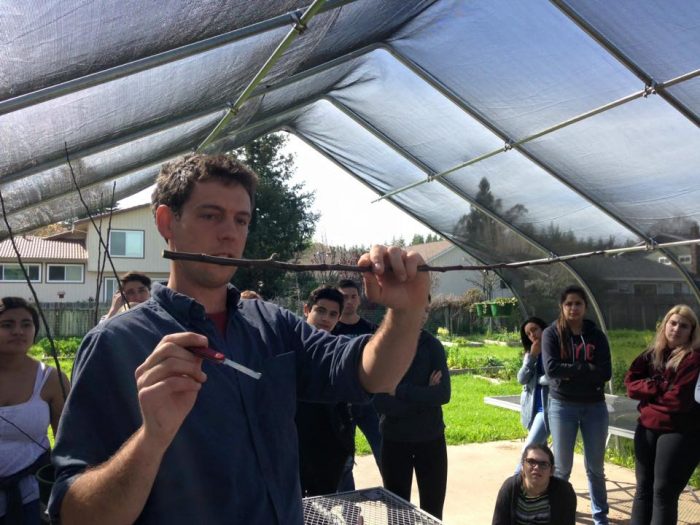
Students develop and present a farming plan to a mock City Counsel in Sonoma town council chambers:
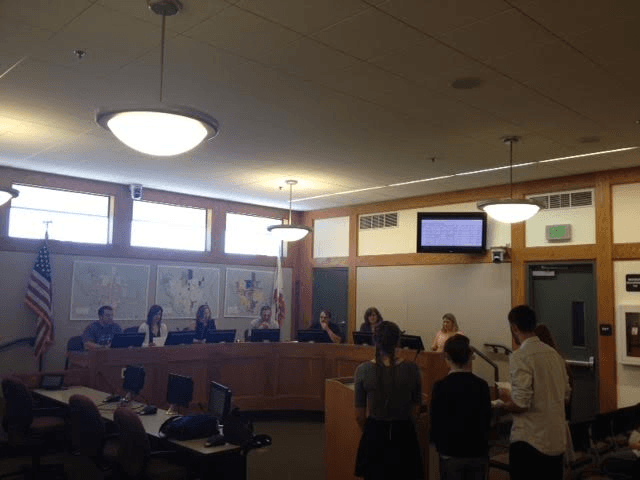
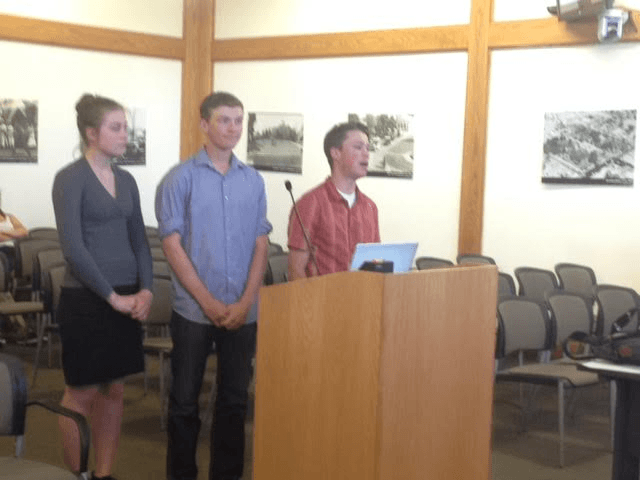
Then it’s time for our Sonoma Ag Academy crew to make a trip to the Capitol in Wash DC for the FFA convention, Future Farmers of America:
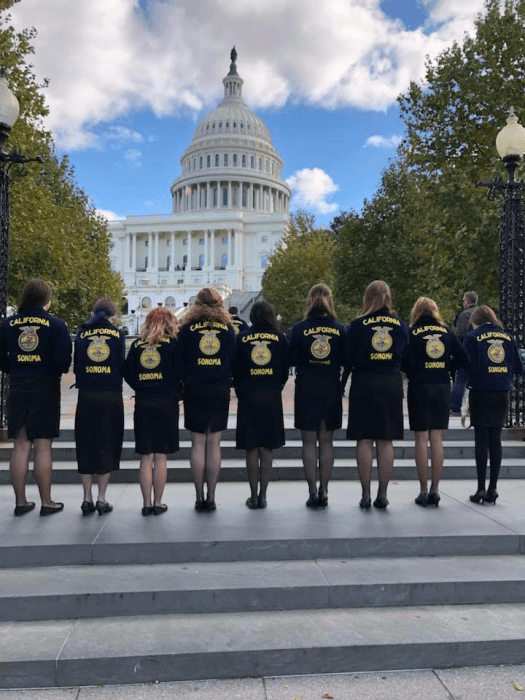
And a new generation of farmers is born:
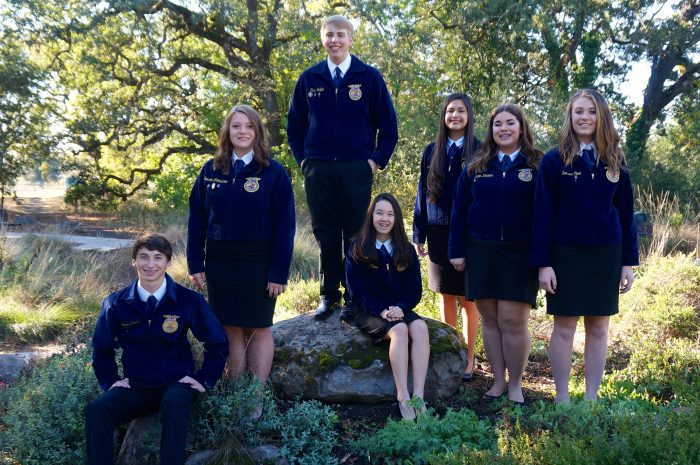
The Advisory Board to the SVHS Agri-Tech Academy is made up of local Sonoma business people, vineyard and winery executives, university professors, and other qualified interested parties. If you would like not join our board, please email me personally.
If you enjoyed this post, please subscribe here
More reading about rootstocks, clones, grafts, and the Ag Academy:
Sunridge nursery’s rootstock selections and attributes
Alphabetical list of Novavine’s clone selections
Image of a notched benchgraft with clone grafted to rootstock
SVHS Agriculture Academy webpage
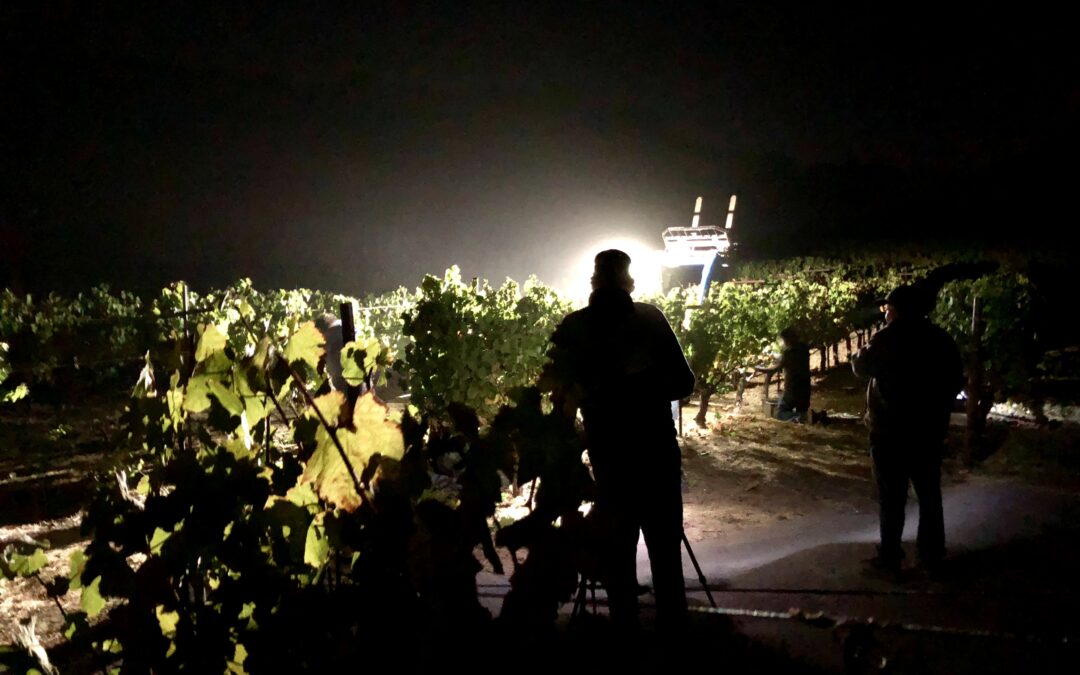
Sep 30, 2018 | Sonoma, Vineyard, Wine
Here is your Sunday Morning just before brunch wine podcast. While you were sleeping, Sonoma Valley was hard at work harvesting wine grapes at night.
You might ask, “hey Ken, what’s it like to prepare for a night harvest?” I’ll tell you…Are the grapes ready?, where is that lab report?, where are the lugs and bins?, get the tractor over here asap, tell Don Tacho to grab more diesel fuel, make sure we have the crew ready to go…oh no, the bin trailer broke down!, get the welder on the phone, and how late is Sonoma Market open for burritos? These are some of the features of getting ready for the nighttime harvest…
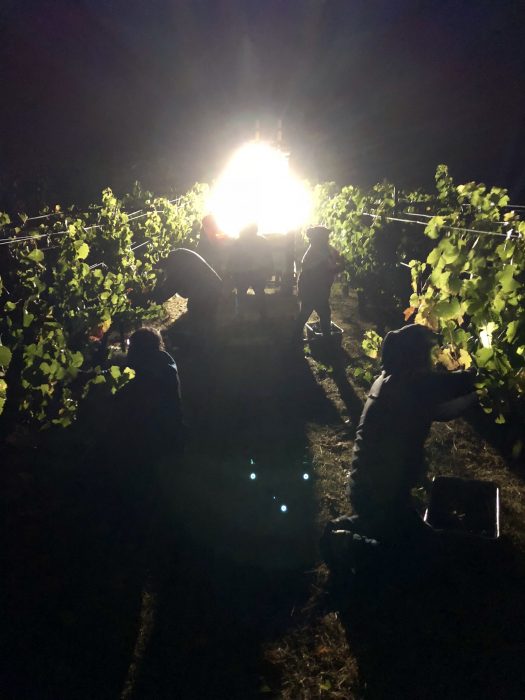
Do you love that cool-climate Pinot? Maybe that spicy Syrah or that dark inky GSM blend? To make these wines, the grapes must arrive at the winery very chilled. Warm grapes will begin to ferment almost immediately. Start picking at 7:00am, and the grapes will be 85 degrees by mid-afternoon. And that’s how bad flavors can arise – like vinegar (acetobacter) and nail polish (acetone). So picking at night assures the grapes will arrive at the winery in mint condition.
Many vineyards are too large to be picked in a few hours. So we must start a few hours after dusk in order to get all the grapes picked, loaded, and delivered by the early morning. Whether the vineyard is large or small, wineries (and winemakers, like me) prefer that fruit arrives at daybreak – so that we have the early morning to calmly process the fruit and move it into fermentation tanks. And then run the labs: brix (sugar), pH (logarithmic scale used to specify the acidity or basicity of an aqueous solution), TA (total acidity), etc.
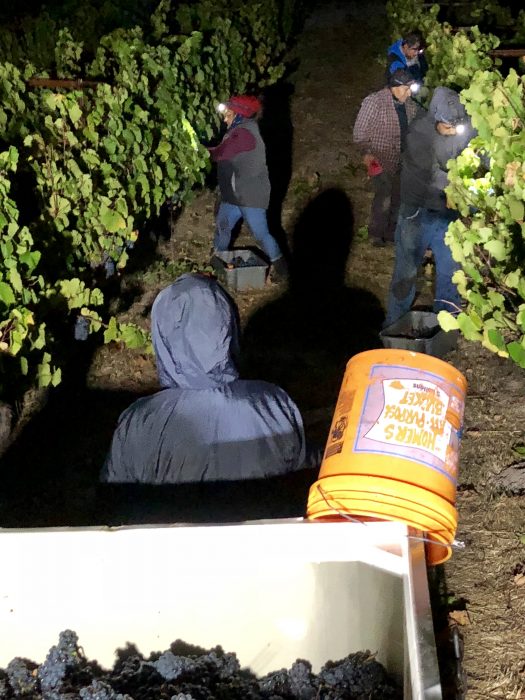
If you have not fallen back asleep yet, terrific. Here are a series of short (and hopefully dramatic) videos documenting one of our recent September 2018 night harvests:
Its a few hours after sunset, the cool fog has rolled in, and we are underway…
video: foggy harvest
Now it’s pitch-black outside, and picking continues using headlamps…
video: closeup of señora Marta picking
Heavy lugs filled with 40 pounds of hand-picked fruit are laboriously carried to the half-ton bins which are being towed behind the tractor lights…
video: two lugs delivered
Highly experienced grape picker Señor Claudio keeps his AM radio going to Oaxacan La Banda music all night long. Claudio has many loving nicknames, my favorite is “El Maquina” (the machine) mostly because rain or shine, hot or cold, he never ever wears a hat or jacket. Believe me, we have offered, begged, cajoled, but he insists…
video: Señor Claudio and his am radio
The tractor pulling the half-ton bins provides bright light in the work area. But it’s an odd sight when you step just a few away…
video: the weird world under the lights
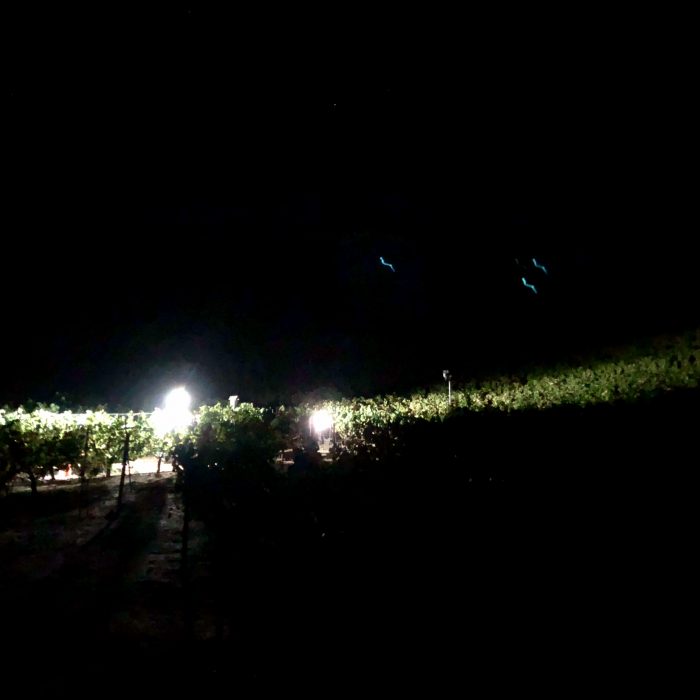
As the night fades away and the sun begins to rise, it’s time to count up the 1/2-ton bins and get staged to load onto the flatbed truck and get the fruit to the winery…
video: counting the bins at the end
And that’s how a night harvest goes!
Coming in the next blog post: Sonoma Harvest 2018 Part 2 “The Day”

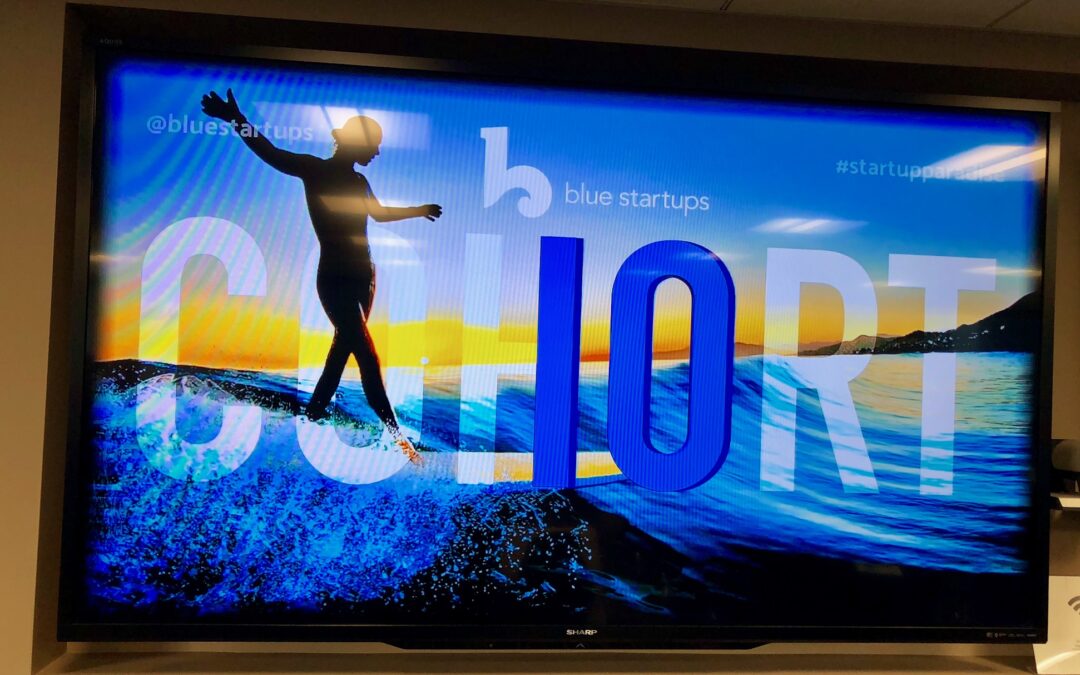
Aug 6, 2018 | Sonoma
Focusing on vacation rentals is a bit afield from our usual topic – Sonoma grapes and wine. It’s all well and good to grow great grapes, make delicious wine, and build beautiful wineries. But we’d better have customers to enjoy it all. Many growers and winemakers rely on vacation rentals for their customer traffic. And often operate vacation rentals themselves.
One of the biggest challenges with all vacation rental operations is the “turnover”. Unlike hotels which have staff, individual vacation units are turned over one at a time, and often managed by the owner themselves. Managing that process – stripping beds, doing laundry, cleaning kitchens, repairing toilets, etc – falls to an array of independent cleaners and maintenance people. Identifying qualified cleaners and squeezing those cleaning teams inside of a 3-hour turnover window is a complicated and ever-present headache.
Last week, Cynthia and I travelled to the SF law offices of Wilson Sonsini to hear presentations from 8 tech start-ups, all organized by Hawaii-based startup-accelerator BlueStartups.
Bluestartups.com
Our prime interest was in one firm, TurnoverBnB, lead by Israeli-born Hawaii-resident Assaf Karmon. They have developed a high-functioning platform to help vacation rental operators locate qualified vendors and manage all of their disparate support staff and schedules. And help turnover and maintenance staff plan their calendars as well.
Are you operating an AirBnB or VRBO rental? If yes, you need to take a close look at this app…
Click here:
https://turnoverbnb.com/airbnb-enhanced-cleaning-for-rentals/
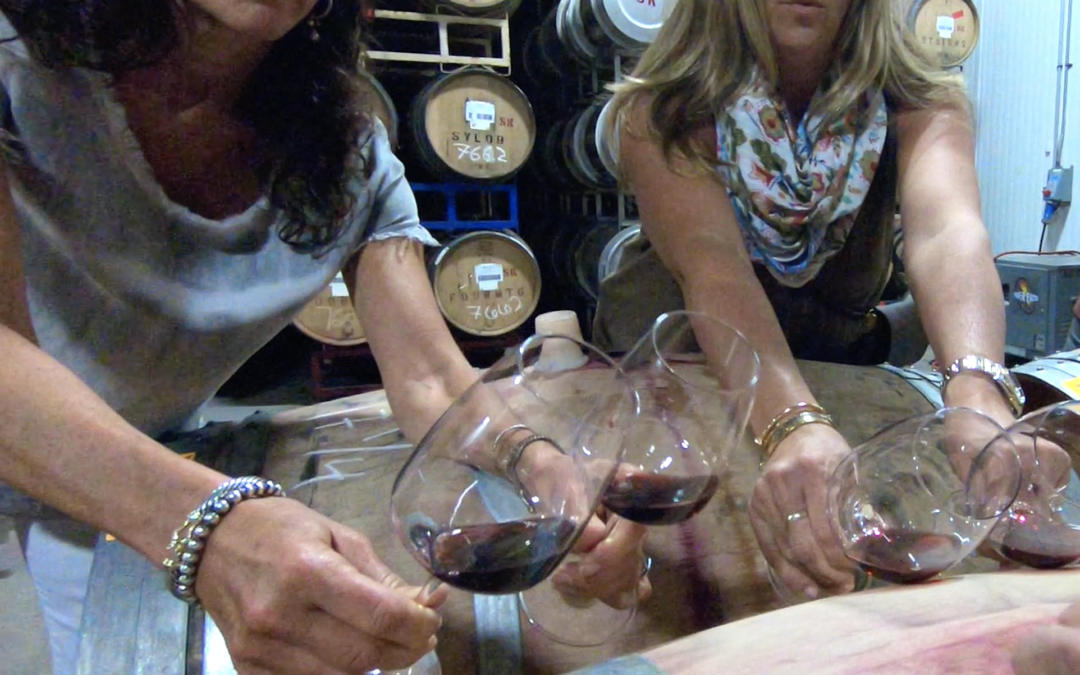
Jul 8, 2018 | Sonoma, Vineyard, Wine
Hydeout Sonoma has many wonderful clients. Our New York-based clients, owners of the Sovare label, came into town to taste their 2017 vintage. Sovare is an estate hillside vineyard near Sonoma Mountain comprising equal percentages of Cabernet, Sangiovese, and Zinfandel.
Hydeout Sonoma took over management of the vineyard in 2015. At that time the vineyard was not in good shape. After a lot of dedicated attention, this is the vineyard as of July 2018:
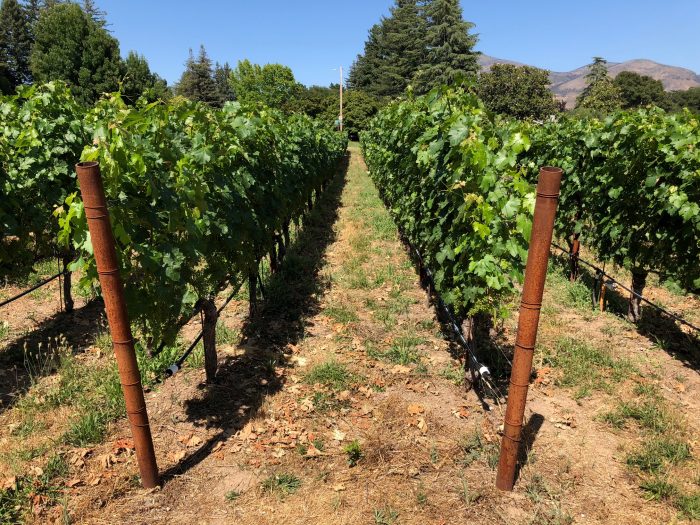
And here is a pictorial essay of Sovare’s visit to the Arcana Winery custom crush facility where Hydeout Sonoma makes the Sovare wine:
Using a wine thief, I am pulling equal sample volumes from these barrel and blending into wine glasses ‘on the fly.’
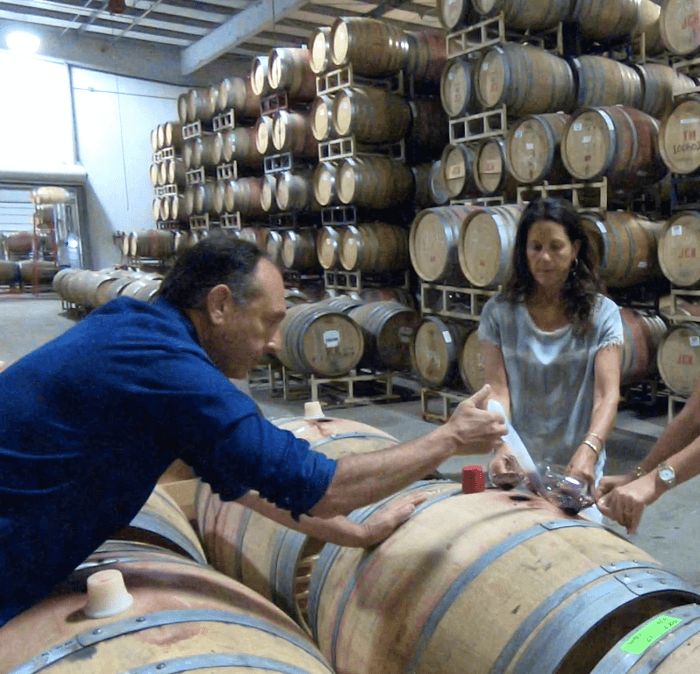
Almost ready with equal parts from several different barrels:
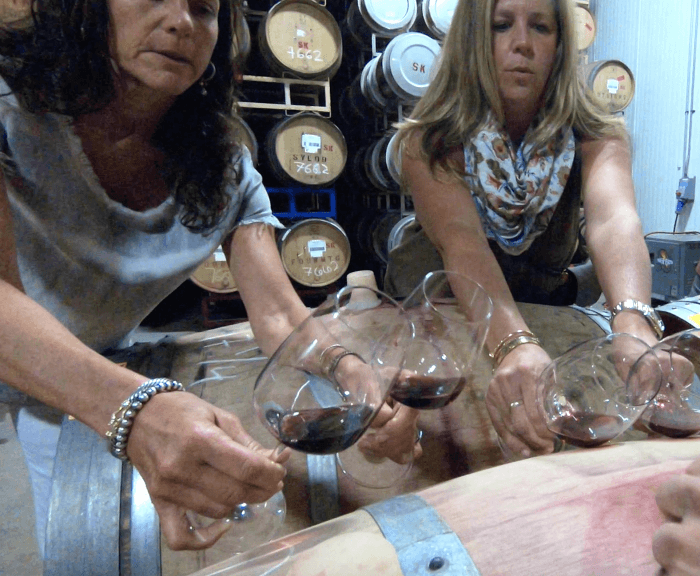
The moment of truth, tasting the 2017 vintage.
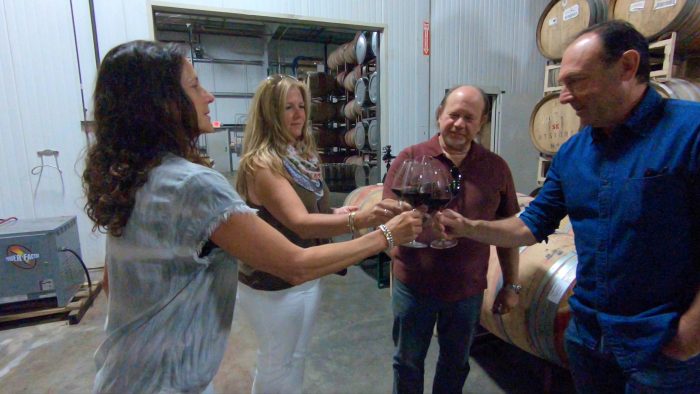
Discussion follows, how much more time in the barrel, in what way is the 2017different from 2016, what wood to use in 2018, and so on.
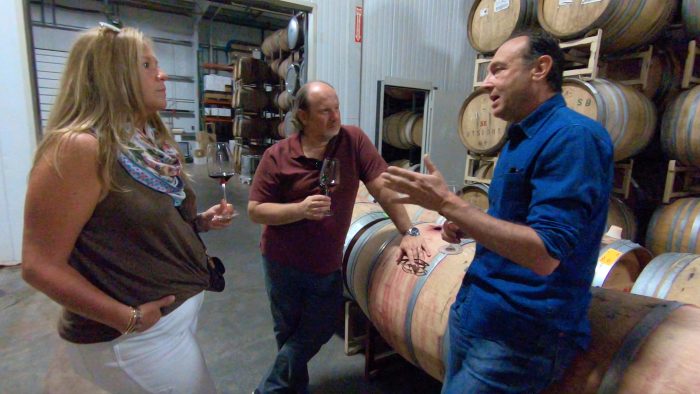
And more discussion…
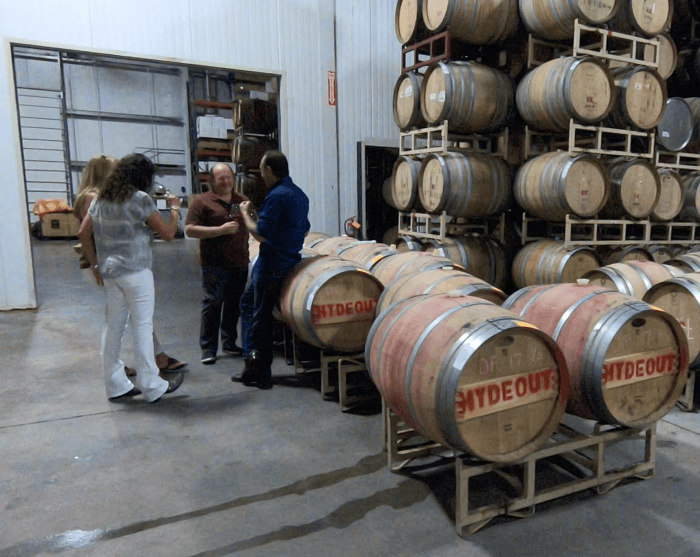
And more discussion…
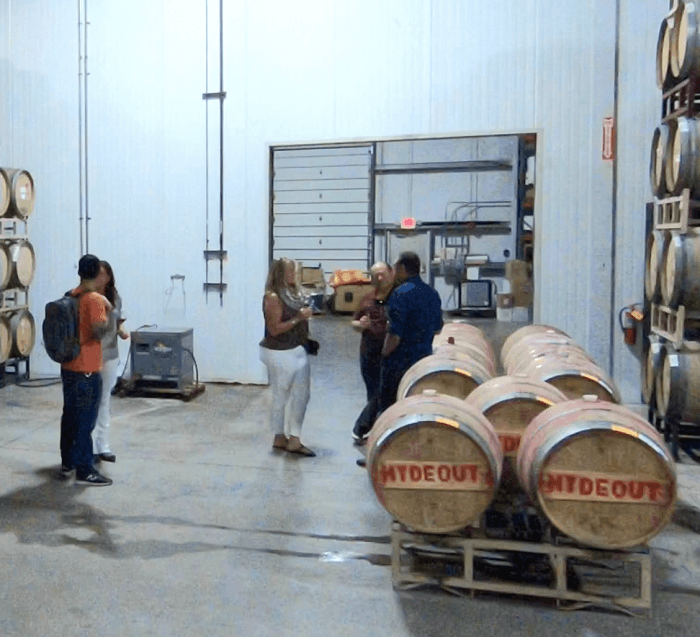
Having settled on the key next steps fro 2017 and 2018, now we need to decide where to go for lunch! We ended up at El Dorado Kitchen on the square for some al fresco dining.
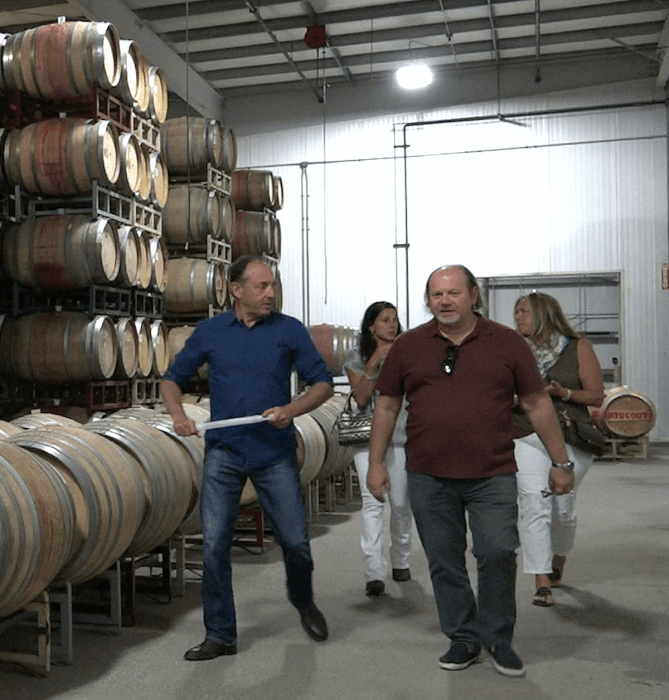
This is the first Sovare vintage, from 2016:
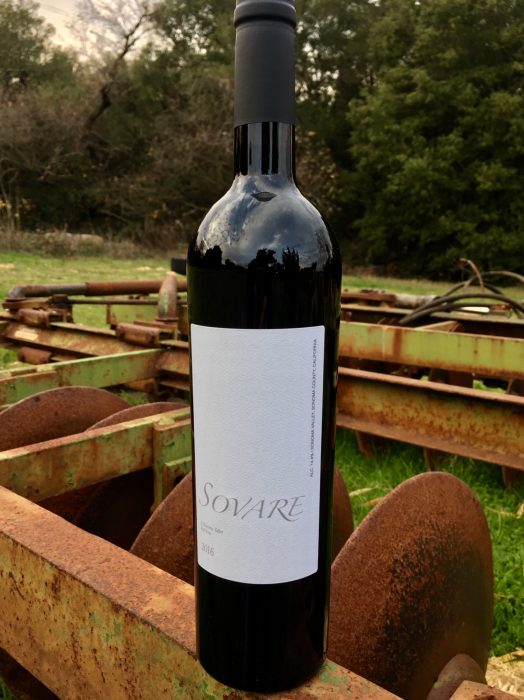
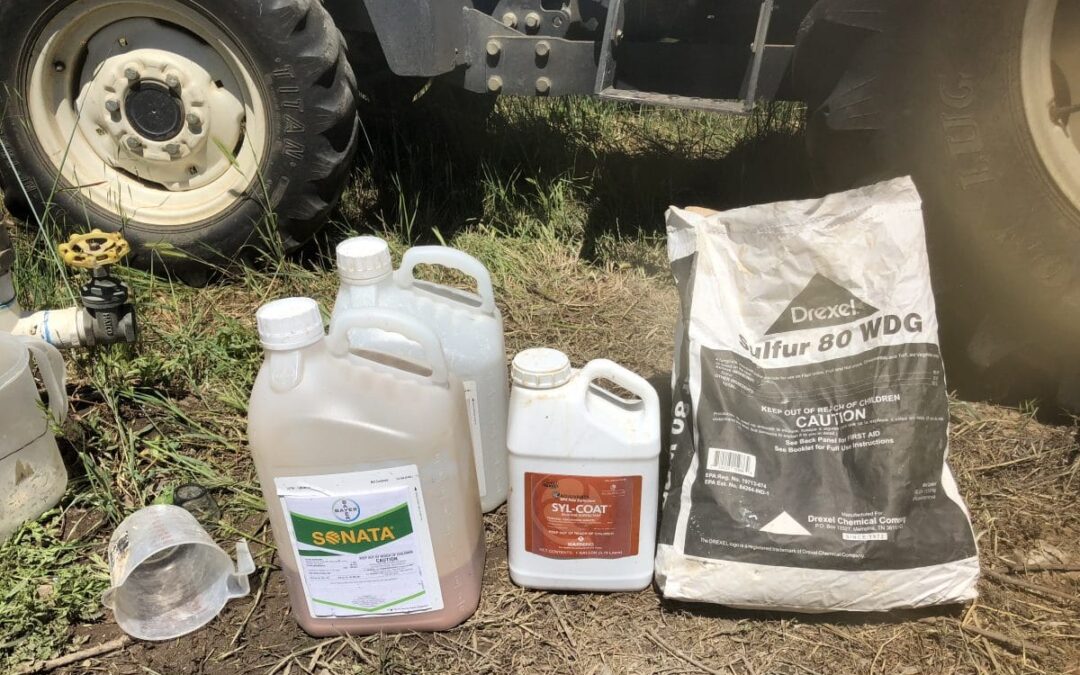
Jun 10, 2018 | Sonoma, Vineyard, Wine
Farming Sonoma vineyards organically is expensive and time consuming. And it makes the wine more expensive too. Why?
One of the biggest risks to vineyards around the globe is mold and mildew. Mildew spores over-winter in dormant cane buds and under bark. For season-long control, the vineyards must be sprayed. But with what?
Traditional farming deploys an array of chemicals to knock down mold and mildew. Examples include Tebuconazole, Triflumixole, and Quinoxyfen. To be effective, during the growing season chemicals like these will be sprayed on every inch of every grapevine roughly every 21 days.
Organic choices are more limited, and less effective, and sometimes more expensive too. And they must be applied every 10-14 days. Over the course of an entire growing season, that means 3-5 more trips through the vineyard with the driver, tractor, and sprayer, and nearly twice the total chemical cost. If you owned vineyards and you’re livelihood depended on growing and selling perfect grapes, which path would you choose?
At Hydeout Sonoma, we are sustainable always, and organic whenever possible. And our clients happily (or grudgingly) pay the extra costs – knowing their kids and pets can safely play in the vineyard and (the adults) can safely drink the wine.
In May, most grapes will look like this…
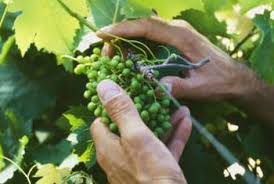
Those same grapes grapes will look like this by late summer…
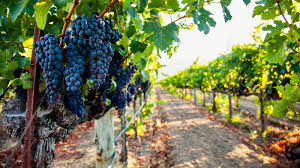
but left untreated, by Fall those grapes will look like this, ruined…
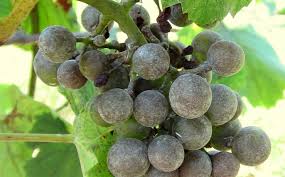
Mold and mildew must prevented early and all season (until the grapes start to color up or turn red, called verasion). Once you have it, no amount of irrigation or spraying will get you out of mildew trouble.
An uninformed person might drive past one of our organic spray programs and get pretty nervous hearing all the noise and seeing the chemical fog. This is what fully organic spraying can look like from a distance…
organic spray by tractor
And up close…
organic spray by tractor close up
This week, we are spraying a combination of 3 organic products, all approved by OMRI (Organic Materials Review Institute).
OMRI is a non-profit that supports organic integrity by developing clear information and guidance about materials, so that producers know which products are appropriate for organic operations.
https://www.omri.org
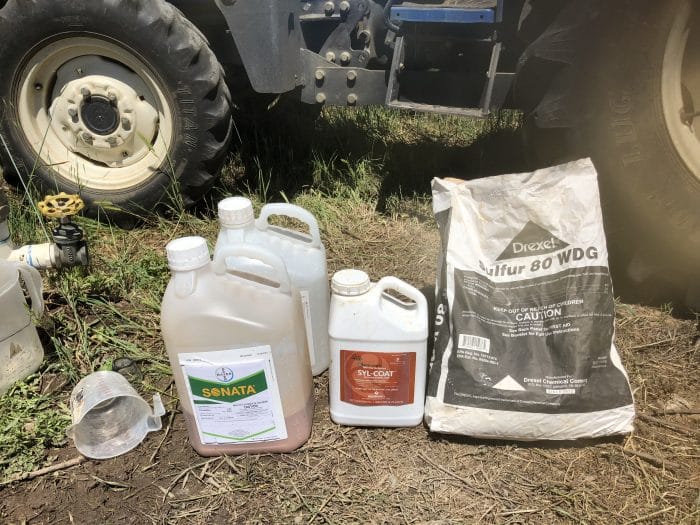
- Sulfur 80: it’s just like what it sounds, basically naturally occurring sulfur in mineral form all crushed up, and then pulverized so that it will go into dispersable suspension with water,
- Sonata: is a bio-fungicide with live bacteria spores that induce plants’ natural defenses to resist disease development and anti-fungal compounds that have contact fungicidal activity.
- Syl-coat: is a nonionic surfactant which has been specifically designed to enhance the efficacy of pesticides. It is particularly effective when used with water-soluble mildewcides.
Along with managing organic pesticides, vineyard irrigation management is an equal challenge. Here is one sample image of how I manage our client’s vineyard irrigation from my cell phone.
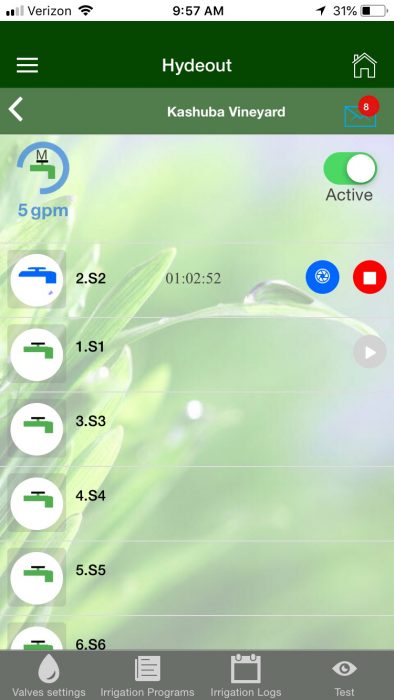
See more Hydeout Sonoma blog entries at: https://www.hydeoutsonoma.com/welcome-to-the-hydeout-sonoma-blog/













































